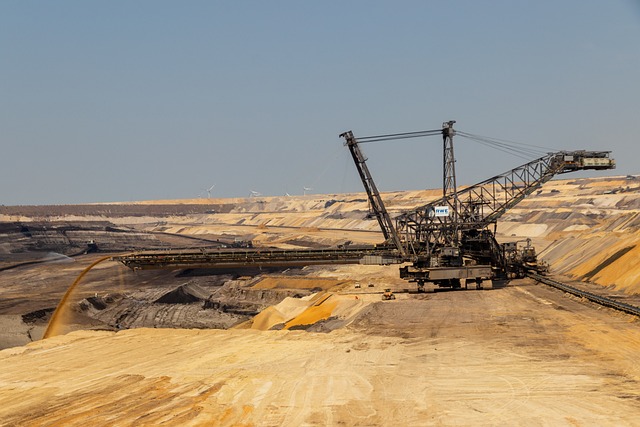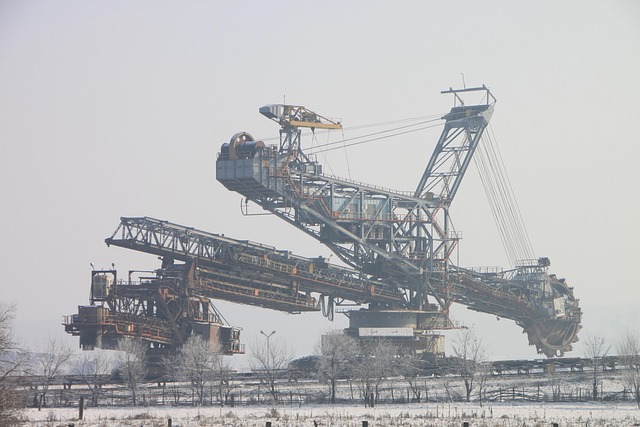In the mid-19th century, the Oregon Gold Rush transformed Lane County into a bustling hub with thriving boomtowns like Eugene, Springfield, and Cottage Grove. Prospectors faced harsh conditions and intense competition for claims, leading to economic booms and disparities. The rush left physical marks like abandoned mines and towns, shaping a diverse cultural heritage. Today, Lane County's landscape and folklore bear witness to the indelible legacy of this historic period.
“Unraveling the Past: The Lane County Gold Rush Era and Its Hardships”
Lane County, Oregon, witnessed a dramatic transformation during the 19th-century gold rush, attracting thousands of prospectors seeking fortune. This article delves into the vibrant yet challenging history of this era through various facets. From the initial boomtowns to the complex web of mining claims, it explores the rise and fall of Oregon’s gold rush towns. Discover the daily lives of Lane County’s prospectors facing harsh conditions, land disputes, and shifting community dynamics. Uncover the lasting legacy left by this frenzied period on the region’s landscape and culture.
- The Gold Mining Boom in Lane County: A Historical Overview
- Life as a Prospector: Challenges and Hardships Faced by Lane County's Miners
- Oregon Gold Rush Towns: Rise and Fall of the Local Economies
- Mining Claims and Land Disputes: A Complex Web in Lane County
- The Social Impact: Community Dynamics and Cultural Shifts During the Rush
- Legacy of the Gold Rush: Long-Term Effects on Lane County's Landscape and Culture
The Gold Mining Boom in Lane County: A Historical Overview

In the mid-19th century, Lane County, Oregon experienced a transformative period with the onset of the gold rush. The discovery of gold in various locations across the county sparked an influx of prospectors and settlers, leading to the rapid growth of several boomtowns. This era became defined by the hustle and bustle of miners flocking to stake their claims and the subsequent economic boom that characterized Lane County’s landscape. The Oregon gold rush brought about significant changes as communities sprang up around mining sites, each with its unique story and allure.
The gold mining boom attracted individuals from diverse backgrounds, all united by the prospect of striking it rich. Lane County’s once-quiet countryside became a vibrant tapestry of bustling towns like Eugene, Springfield, and Cottage Grove, each playing a vital role in the region’s new economy. The demand for goods and services surged as miners needed provisions, equipment, and shelter, leading to a flourishing trade and commerce sector. This period left an indelible mark on the county’s history, with remnants of old mines and abandoned boomtowns still visible today, whispering tales of the past.
Life as a Prospector: Challenges and Hardships Faced by Lane County's Miners

Life as a prospector in Lane County during the Oregon Gold Rush was both exhilarating and arduous. Miners faced a multitude of challenges, from navigating treacherous terrain to enduring harsh weather conditions. The constant search for gold required immense physical endurance, often leading to exhaustion and malnutrition. Living in remote boomtowns, these prospectors dealt with isolation and loneliness, far from their families and familiar communities.
The economic landscape of the time was volatile. Success in gold mining was never guaranteed, leaving many prospectors with uncertain futures. Those who struck it rich often faced a different set of challenges—how to manage newfound wealth responsibly and avoid the pitfalls of excessive spending or greed. The competition for precious claims was fierce, driving miners to explore deeper, more remote areas, further exacerbating the hardships they endured.
Oregon Gold Rush Towns: Rise and Fall of the Local Economies

During the Oregon Gold Rush in the mid-19th century, several towns sprang up across Lane County, each fueled by the prospect of striking it rich through gold mining. These boomtowns, like Jacksonville and Springfield, experienced rapid growth as hundreds of prospectors flocked to the area, seeking their fortunes. The local economies boomed with the influx of miners, merchants, and service providers, leading to a vibrant and dynamic community. However, the rise of these towns was often short-lived, as quickly as they had emerged, they could disappear just as suddenly.
The economics of the Oregon Gold Rush were complex. While some lucky prospectors made significant finds and left their mark on the region’s history, many others struggled to make ends meet. The cost of living in these boomtowns was high, with prices for basic goods and services inflated due to demand. Moreover, the constant competition for mining claims and the unpredictable nature of gold deposits led to a volatile environment where fortunes could be made or lost overnight. As the rush subsided, many miners moved on, leaving behind empty streets and decaying buildings, a testament to the fleeting nature of the gold rush era in Lane County.
Mining Claims and Land Disputes: A Complex Web in Lane County

The gold rush in Lane County brought a surge of prospectors seeking their fortunes, but this influx also led to significant land disputes and a complex web of mining claims. As more people arrived, competition for prime mining locations intensified. Prospectors often staked their claims along creeks and rivers, where the richest veins were rumored to lie, leading to overlapping and disputed territories. The process of legitimizing these claims was not straightforward, causing tensions among miners who had to navigate a bureaucratic maze to secure their rights.
Oregon’s gold rush economics created a boomtown atmosphere in Lane County, but the rapid development also resulted in land speculation and legal battles. Local governments struggled to keep up with the rapid changes, and conflicts arose over property boundaries, water rights, and mining privileges. These disputes often led to violent confrontations as rival groups vied for control of lucrative veins. The complex web of claims and conflicts mirrored the frenzy of the gold rush itself, shaping the social and economic landscape of Lane County’s rapidly evolving communities.
The Social Impact: Community Dynamics and Cultural Shifts During the Rush

The influx of prospectors and miners during the gold rush era significantly reshaped the social fabric of Lane County. The once tranquil communities underwent a rapid transformation as hungry for gold, people from all walks of life converged, creating a vibrant yet tumultuous mix of cultures. Boomtowns sprang up overnight, attracting diverse individuals who sought not only wealth but also a sense of community amidst the chaos. These towns became melting pots where settlers from different backgrounds intermingled, leading to unique cultural shifts and social dynamics.
The economic boom brought both opportunities and challenges. Gold rush economics fueled a period of intense prosperity, attracting businesses and services to cater to the growing population. However, this rapid growth also led to social disparities, as wealth was often concentrated in the hands of a few successful miners while many others struggled to make ends meet. The competitive nature of gold mining fostered both collaboration and conflict among prospectors, competing for the best Lane County mining claims and resources.
Legacy of the Gold Rush: Long-Term Effects on Lane County's Landscape and Culture

The Gold Rush era left an indelible mark on Lane County’s landscape and culture, shaping its identity long after the last prospector packed up their pickaxe. The influx of eager seekers transformed peaceful forests into bustling mining camps and vibrant boomtowns. These towns became hubs of economic activity, with saloons, general stores, and churches springing up to cater to the diverse needs of the growing population. The mining claims scattered across the county left a lasting impact on the region’s geography, with abandoned shafts and trails still visible today.
The long-term effects extended beyond physical changes; it fostered a unique cultural heritage. Lane County’s prospectors, often from diverse backgrounds, brought their traditions and stories, creating a melting pot of cultures. The hard work and determination during this period left a resilient spirit among the locals, shaping their approach to challenges. Today, the echoes of these times can be seen in local folklore, historical sites, and the county’s pride in its rich history, all testaments to the enduring legacy of Oregon’s Gold Rush era.
